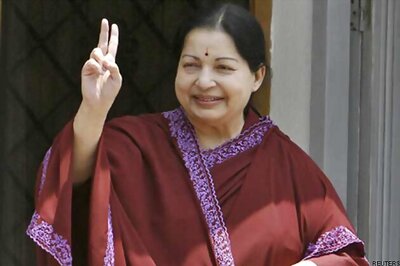
views
New Delhi: Like any other violent episode in India, the Bhima Koregaon violence which shook the nation in early January this year too was meant to be an episode that would only reckon in courts.
However, on Tuesday, nine activists were searched and five of them arrested after sweeping multi-city raids across in Delhi, Faridabad, Goa, Mumbai, Ranchi and Hyderabad.
Maoist ideologue Varavara Rao, Sudha Bharadwaj and activists Arun Fereira, Gautam Navlakha and Vernon Gonsalves were taken into custody on Tuesday over allegations of Maoist links and for inciting the Bhima Koregaon violence.
News18 breaks down the entire episode:
What is Bhima Koregaon?
Bhima Koregaon is in the Pune district of Maharashtra. This small village has a rich Maratha history. 200 years ago, on January 1, 1818, a few hundred Mahar soldiers of the East India Company, led by the British, defeated the massive Peshwa army, led by Peshwa Bajirao II, in Koregaon. This battle has, since, attained legendary stature in Dalit history. The Dalits who follow BR Ambedkar do not view this as only a debate between nationalism versus imperialism but a battle which was seen as a victory of Mahars over the injustice and torture meted out to them by the Brahminical Peshwas.
So What Happens There Every January?
Every year on January 1 as the world stays drowned under the magic of New Year celebrations, it’s the Ambedkarite Dalits who gather at Bhima Koregaon to pay their respect at the Vijay Sthamb (victory pillar). The pillar was erected by the East India Company in memory of those who fought the battle. The names of the Mahar soldiers who unknowingly brought an end to the Peshwa rule in 1818 are inscribed on the pillar.
What Happened Here in January this Year and What was the Underlying Fault Line?
2018 was the 200th year of the “victory of Mahars over the Brahmanical Peshwas.” During the celebrations there were violent clashes between Dalit and Maratha groups, resulting in the death of at least one person and injuries to several others.
Being the 200th anniversary, the gathering in Bhima Koregaon this year was much larger than usual. Many Dalit and Bahujan groups collectively organised a public conference in the name of Elgar Parishad at Shaniwar Wada, which was the seat of the Peshwas until 1818. The agenda of this conference was evidently against Hindutva politics as this was done by showing Hindutva politics in the form of neo-peshwai (new Peshwas). Jignesh Mevani and Prakash Ambedkar were invited.
This set stage of Dalits against Hindutva which led to the cause being politicised particularly after the Una violence in Gujarat, has been a cause of concern for those who propagate the latter.
The Elgar Parishad too played a role in it by consolidating their apprehensions against the politicised Dalits. The new political equation of the Dalits by bringing Hindutva and Pehswai on the same stage has irked the right-wing forces and was one of the reasons behind the conflict that Pune witnessed in January.
Any Event That Created Tension Prior to the Clashes on January 1?
There were reports that on December 29, a board had been found erected near a structure believed to be the tomb of Govind Gopal Mahar in Vadhu Budruk village, about 5 km from Bhima Koregaon. The board said Mahar had defied the orders of Mughal king Aurangzeb and performed the last rites of Maratha king Chhatrapati Sambhaji Maharaj after he was killed by Aurangzeb in 1689. Mahar is a Dalit community. Local Marathas, however, believe that it was their ancestors who had performed the last rites of Sambhaji Maharaj.
The Marathas along with the gram panchayat authorities took an objection to the board, saying it was mentioning false history, having no documented evidence. It led to a quarrel between the two communities, the police said. On the same day, an offence was registered by Dalit activists against 49 persons of Vadhu Budruk village under the SC/ST Prevention of Atrocities Act, for damaging the board, police said. The gram panchayat of Vadhu Budruk also reportedly filed a cross complaint with the police in the matter.
However, at the intervention of police and local leaders, the two sides agreed to withdraw the complaints and settle the case.
Was it in Any Case a Planned Attack?
The Dalits have always been known to have drawn inspiration from this victory at Bhima Koregaon. Ever since Bhima-Koregaon Ranstambh Seva Sangh (BKRSS) was formed, they regard the stambh or pillar as a site of their valour and a symbol of their place in the political diaspora.
The Maratha youth, who are facing unemployment and a lack of educational opportunities, are now being easily pulled into these conflicts by Hindutva organisations that are consequently built by invoking past Maratha glory. The violent conflict in Bhima Koregaon was an extension of the conflict in Wadhu Budruk. Hence most reports suggested that this was a pre-planned attack.
What Did the Report Prepared by the Coordination Committee Formed to Assist the Police say?
The report suggested that it was planned attack. It stated that based on the inputs of locals, there was sufficient evidence to prove that clashes were the culmination of a series of provocative acts orchestrated by the radical Hindutva leader Milind Ekbote and the followers of Sambhaji Bhide ‘Guruji’.
“Ekbote used to visit Sambhaji’s tomb at Vadhu-Budruk village (4 km from Koregaon Bhima) and had even floated a ‘committee’ dedicated to its preservation. However, his real purpose during the course of his visits to the village appears to foment caste tensions through his inflammatory speeches,” reported a leading newspaper quoting one of the committee members.
According to the report, on December 15 last year, a provocative message posted by a person allegedly belonging to a Hindutva outfit and doing the rounds on Facebook spoke of “mourning for” Dalits gathering to celebrate the bicentenary of the Battle of Koregaon on January 1.
This led to a mob of 1,500-2000 people comprising Hindutva activists, believed to be the followers of Ekbote and Bhide Guruji near Bhima-Koregaon with the sole purpose of wreaking havoc and disturbing the peace of the occasion.
What were the Earlier Arrests in the Case?
In early June this year, Wilson, a Jawaharlal Nehru University alumnus, was arrested from a south Delhi neighbourhood in a joint operation by Delhi and Maharashtra police. Dalit activist Sudhir Dhawale was too picked up by the police from Mumbai. Sudhir’s lawyer Arun Ferreira said that police officials were trying to fabricate papers to link the incident with Maoists. Nagpur police had raided the residences of Mahesh Raut and Shoma Sen too. Raut was a former fellow of the Prime Minister’s Rural Development Fellowship. Raut also has alleged links with Maoists in Gadchiroli in Maharashtra.
Why was Shiv Pratishthan Chief Sambhaji Bhide Not Arrested Even Though There Was a Case Against Him?
A woman had named Bhide in an FIR blaming him for the Bhima Koregaon violence. However, later, according to chief minister Devendra Fadnavis, in a statement to the magistrate the woman stated that she did not know Bhide, nor had she seen him.
“She had just filed the complaint against him on the basis of what people in Bhima-Koregoan were saying after the January violence”, said Fadnavis.
The CM also stated that there was no evidence against Bhide and arrests would not stop even if someone from his “own house” would have been involved.
Both Bhide and Milind Ekbote are Hindutva activists and accused of triggering anti-Dalit violence. Ekbote is the leader of Samastha Hindu Aghadi. The Maharashtra government gave a clean chit to Bhide but Ekbote was arrested in March for his alleged involvement in the violence. A month later, he was, however, granted bail.
Who Are these Activists and Why Are they Arrested Now?
In a multi-city crackdown, Maharashtra police on Tuesday raided the homes of several prominent left-wing activists, writers and lawyers and arrested five over alleged Maoist links.
Simultaneous raids targeted the residences of prominent Telugu poet Varavara Rao in Hyderabad, activists Vernon Gonzalves and Arun Farreira in Mumbai, trade union activist Sudha Bharadwaj in Faridabad and civil liberties activist Gautam Navalakha in New Delhi.
Rao, Bharadwaj, Farreira, Gonzalves and Navalakha were arrested under IPC Section 153 (A), which relates to promoting enmity between different groups on grounds of religion, race, place or birth, residence, language and committing acts prejudicial to maintenance of harmony.
Where Do the Cases Stand as of Now and What Interventions Have Courts Made?
Soon after Navalakha's arrest, the Delhi High Court ordered stayed his transit remand temporarily and ordered the police not to take him out of the national capital at least till Wednesday. The High Court was hearing a habeas corpus petition filed on behalf of Navalakha by his advocate Warisha Farasat after he was picked up from his Delhi home this afternoon by the Maharashtra police. The case would be again heard on Wednesday.
This was not all and a late night court drama also ensued for activist Sudha Bharadwaj. She was produced before the chief judicial magistrate of Faridabad by Maharashtra police late on Tuesday night despite the Punjab and Haryana High Court cancelling her transit remand and ordering officials to detain her at her Badarpur home for the next two days.
Chief Judicial Magistrate of Faridabad Ashok Kumar directed the Surajkund police to keep activist Sudha Bharadwaj, arrested Tuesday in connection with the Bhima Koregaon violence from December 2017, in her Badarpur home under house arrest until 30 August.
What Are the prominent Human Rights Activists Saying?
In an exclusive, author and Booker prize winner, Arundhati Roy said that “the simultaneous state-wide arrests are a dangerous sign of a government that fears it is losing its mandate and is falling into panic. That lawyers, poets, writers, Dalit rights activists and intellectuals are being arrested on ludicrous charges... while those who make up lynch mobs and threaten and murder people in broad daylight roam free, tells us very clearly where India is headed.”
Rights activist Shabnam Hashmi, too, strongly condemned the raids. "Strongly condemn raids on human right defenders' homes since Morning in Maharashtra, Jharkhand, Telangana, Delhi, Goa. Stop harassing HRDs! Condemn Modi's authoritarian regime," Hashmi said on Twitter.
Noted historian Ramachandra Guha called the action "absolutely chilling" and demanded the intervention of the Supreme Court to stop this "persecution and harassment" of independent voices.



















Comments
0 comment